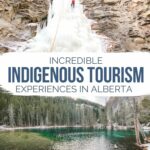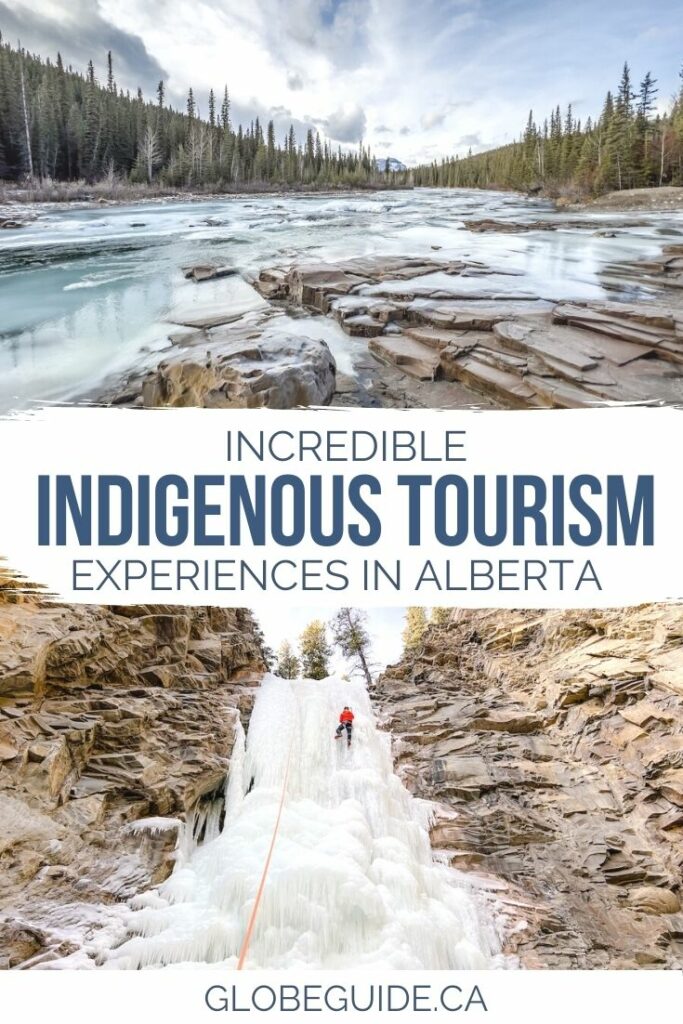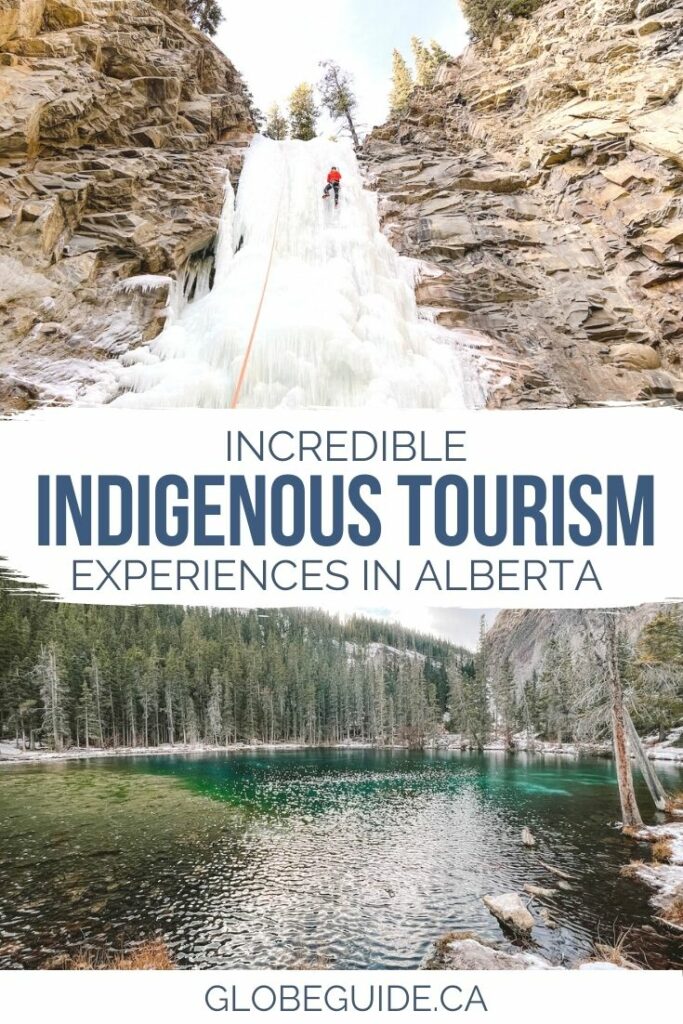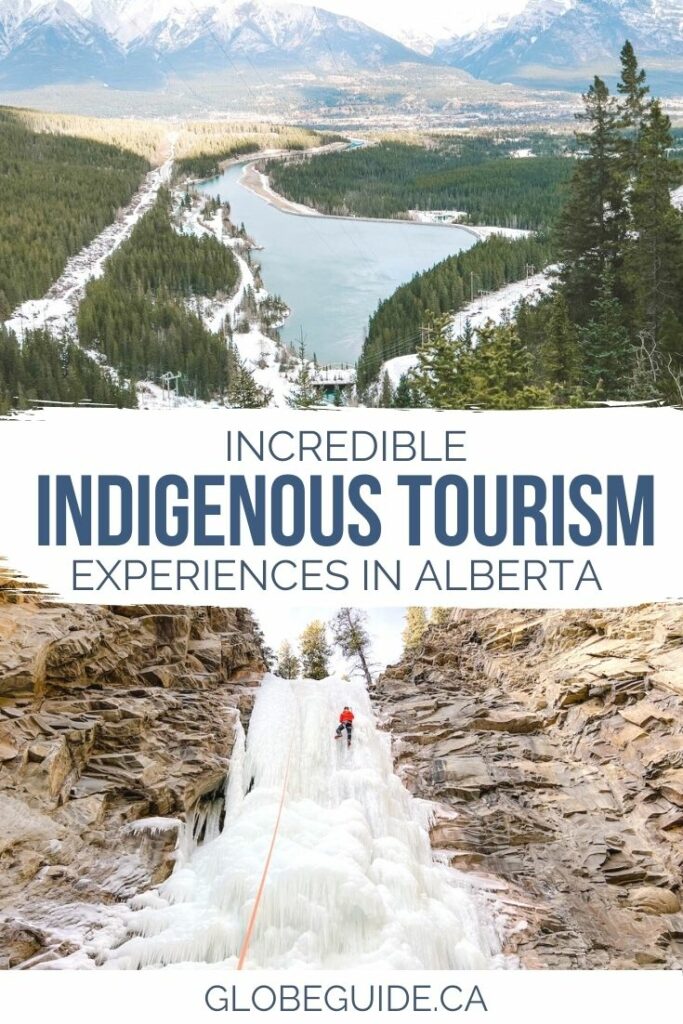The scent of burning sage wafted through the air, the sweet smoke swirling around as a faint breeze caught it. Our group huddled around the small bowl being used for this smudging ceremony, surrounded by large boulders to shelter us from the wind as gem-toned Grassi Lakes glistened in the distance.
Led through this sacred practice in Treaty 7 Territory by guide Heather Black who’s originally from the Blood Reserve, we each took turns kneeling down in front of the bowl. Hot embers glowed among the sage and evergreen needles she’d gathered as kindling, and we used our hands to waft the trail of smoke over our bodies like a cleansing ritual.
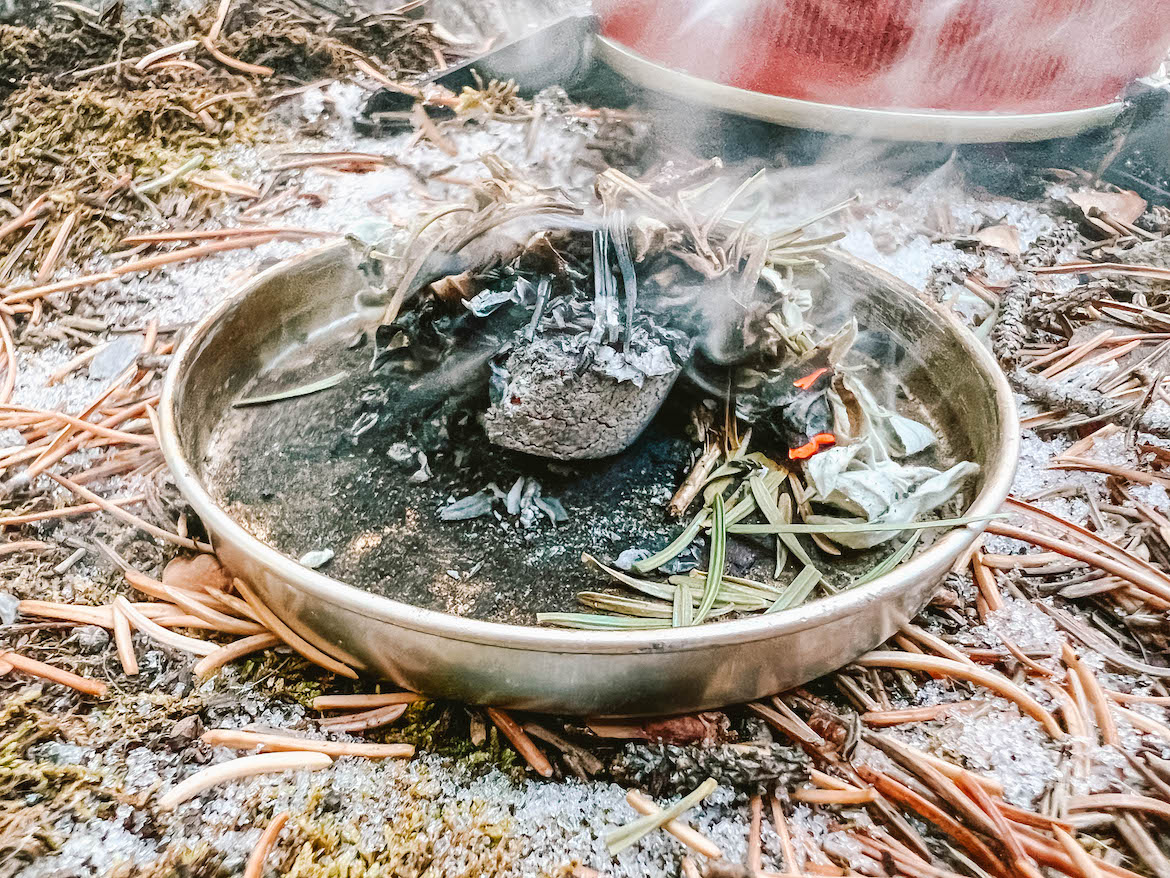
All was quiet save for the wind stirring the barren tree branches, a silent moment marking the end of the ceremony before the soothing sounds of a traditional wooden flute began, played by renowned musician and ceremonialist Walter White Bear from the Moose Cree First Nation.
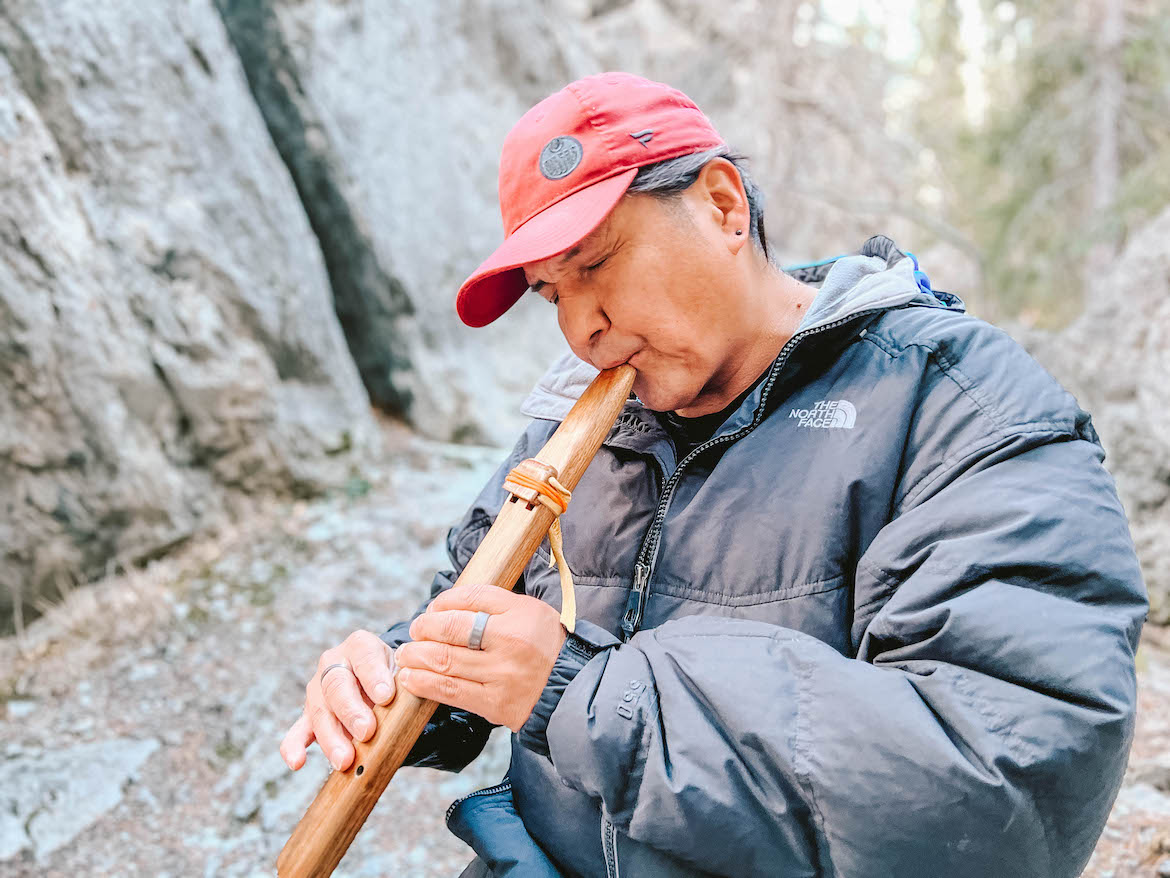
For some, that winter day at Grassi Lakes was simply a chance to go for a hike and reconnect with nature; for me, it was an opportunity to connect with Indigenous culture.
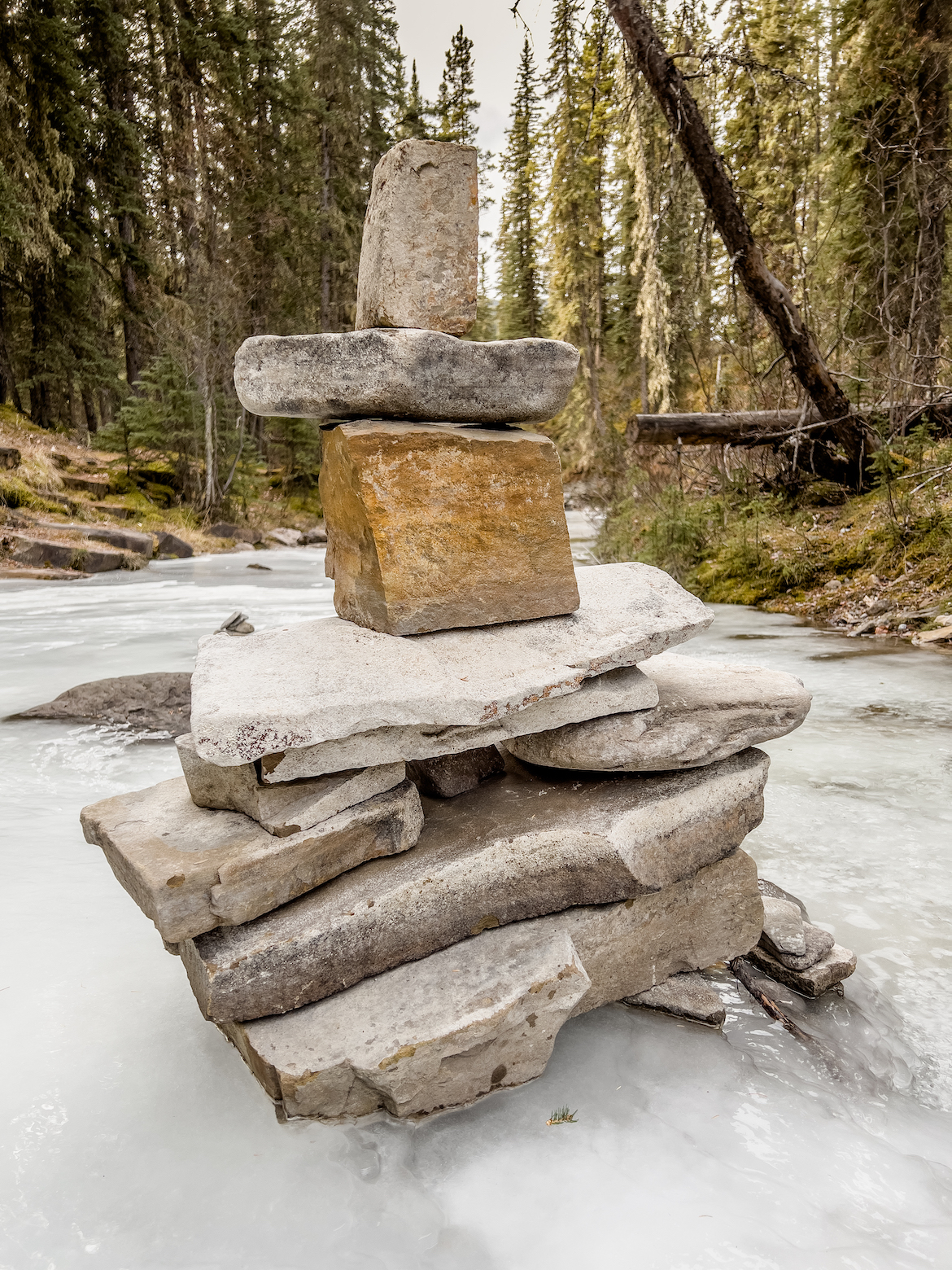
Indigenous tourism in Alberta
Indigenous tourism is an emerging industry across the country, as Canadians seek out stories about the past in this time of reconciliation. Ice climbing in Nordegg, geology tours in Edmonton and wildlife adventures in Jasper are just some of the experiences led by Indigenous Peoples that showcase Alberta’s beautiful backyard while sharing Traditional Knowledge passed down over several generations.
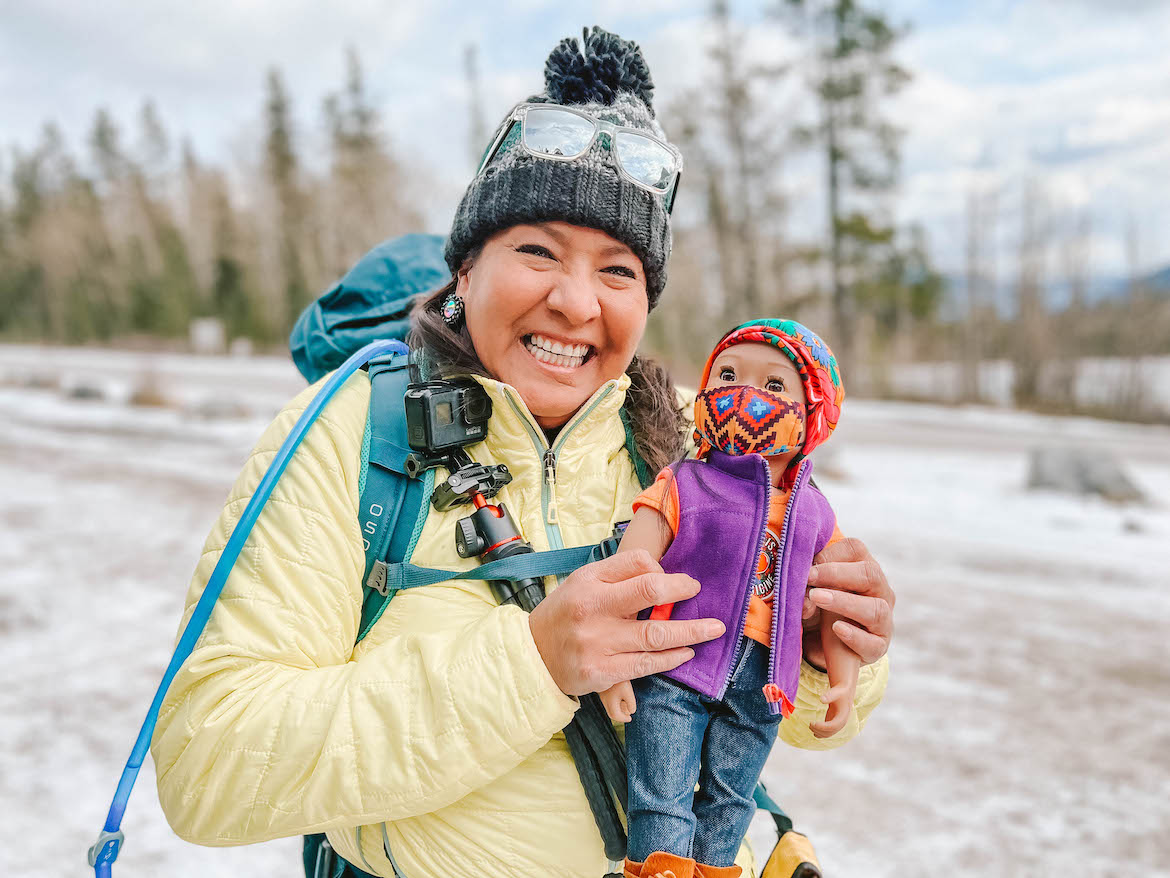
“We learn about our culture right from the trailhead and throughout the whole hike,” Black explains, as we walk through a snow-covered forest framed by the Rocky Mountains. “Reconciliation, what is that, what does it mean to you, any questions you may have about it. Sharing stories about the resilience of Indigenous people…and where we are today.”
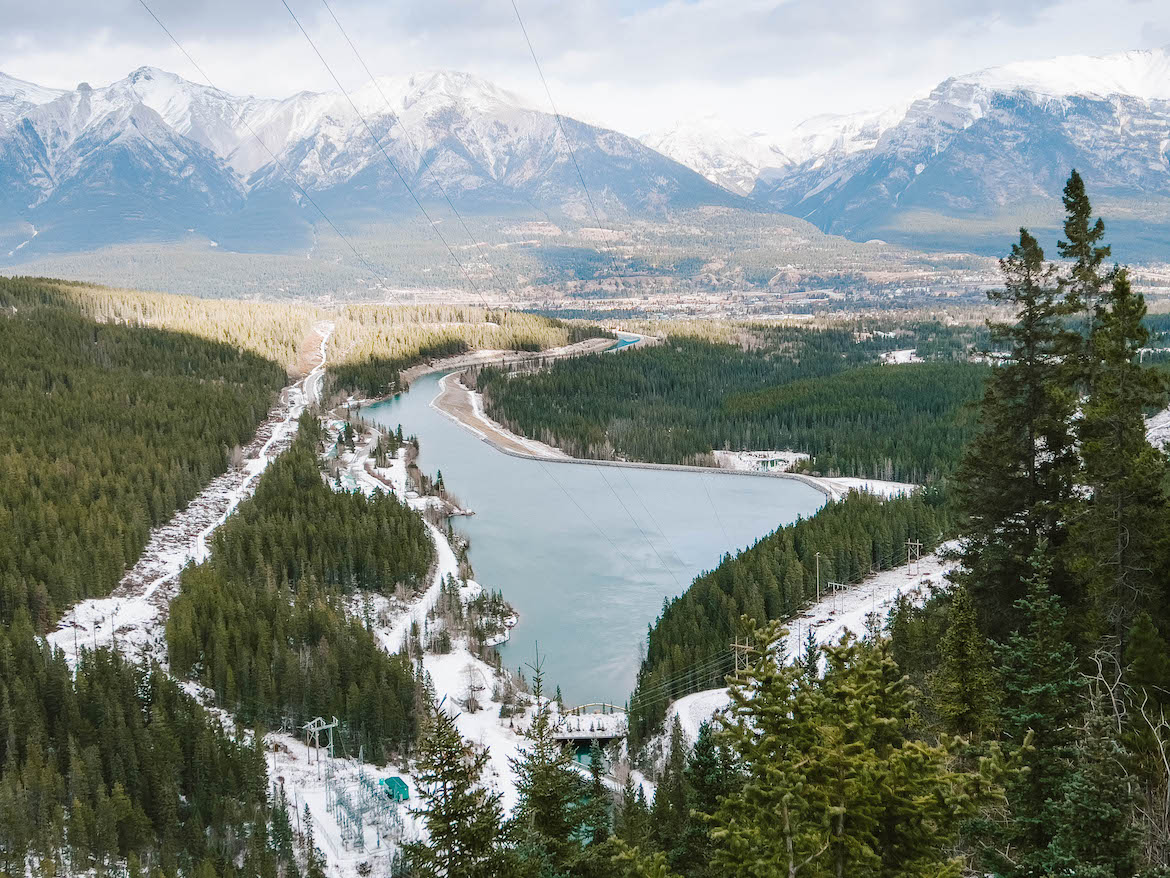
Black is the founder of Buffalo Stone Woman tour company, and leads walks in spots like Troll Falls, the Prairie View Trail and around Kananaskis Country. Each hike starts with an acknowledgement to give thanks and pray for a safe journey, followed by the offering of a piece of tobacco that’s sprinkled at the base of a tree.
“Every morning we smudge, we pray to our creator,” she says. “We give thanks to the sun. The sun is the source of life for all living things.
“The mountains are filled with spirits, with animal spirits and plants…we have built treaties with the animals to be able to speak our language and say we’re not here to bother them, we’re here to walk and not bother their natural habitat.”
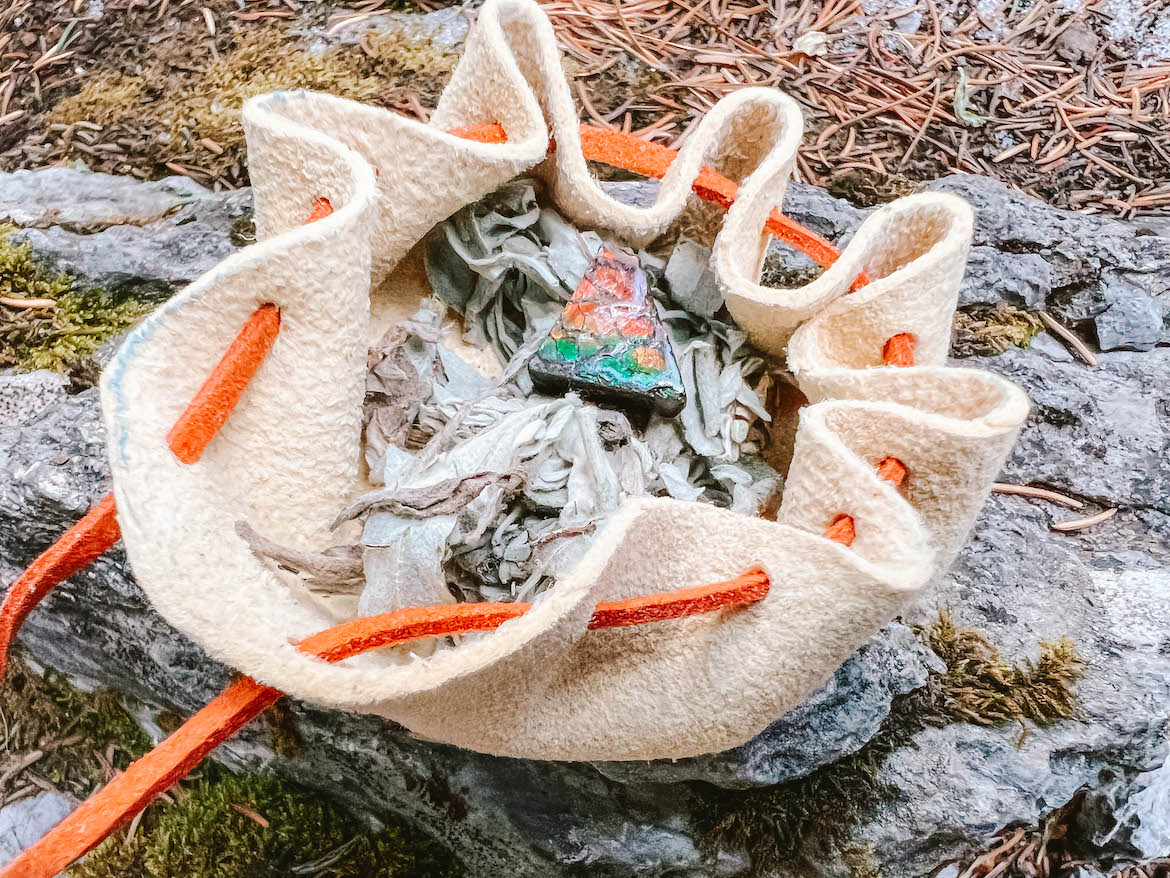
Indigenous tours
Another unique Indigenous tourism experience in Alberta is heading out with Mahikan Trails, which is run by Brenda Holder with the help of her son Jordan Ede. They are Cree and Iriquois, and their knowledge of the land and its medicinal uses has been passed down the family over thousands of years–knowledge they share during guided medicine walks where guests learn how the bark from aspen can be used as a natural sunscreen, or why the yellow yarrow flower is good for relieving toothaches.
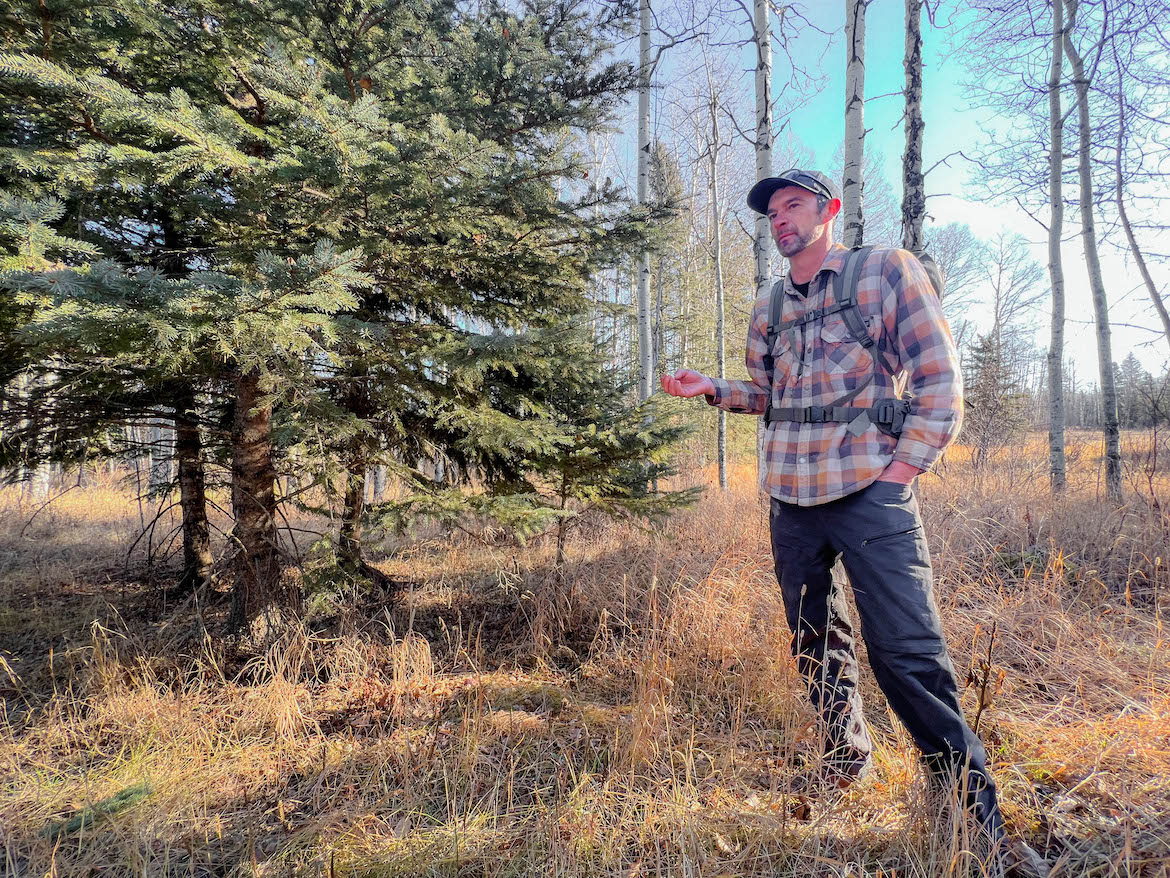
“It’s exciting to me because I watch people become empowered, and they get to go home and make their own medicines, very simple things that I teach them,” Holder says, as we sit around a campfire on a bluebird November day at her property in Clearwater County. “To have something that’s available to them during cold and flu season, or make a beautiful salve for their lips…there’s a lot of great things that come out of the hands-on workshops.”
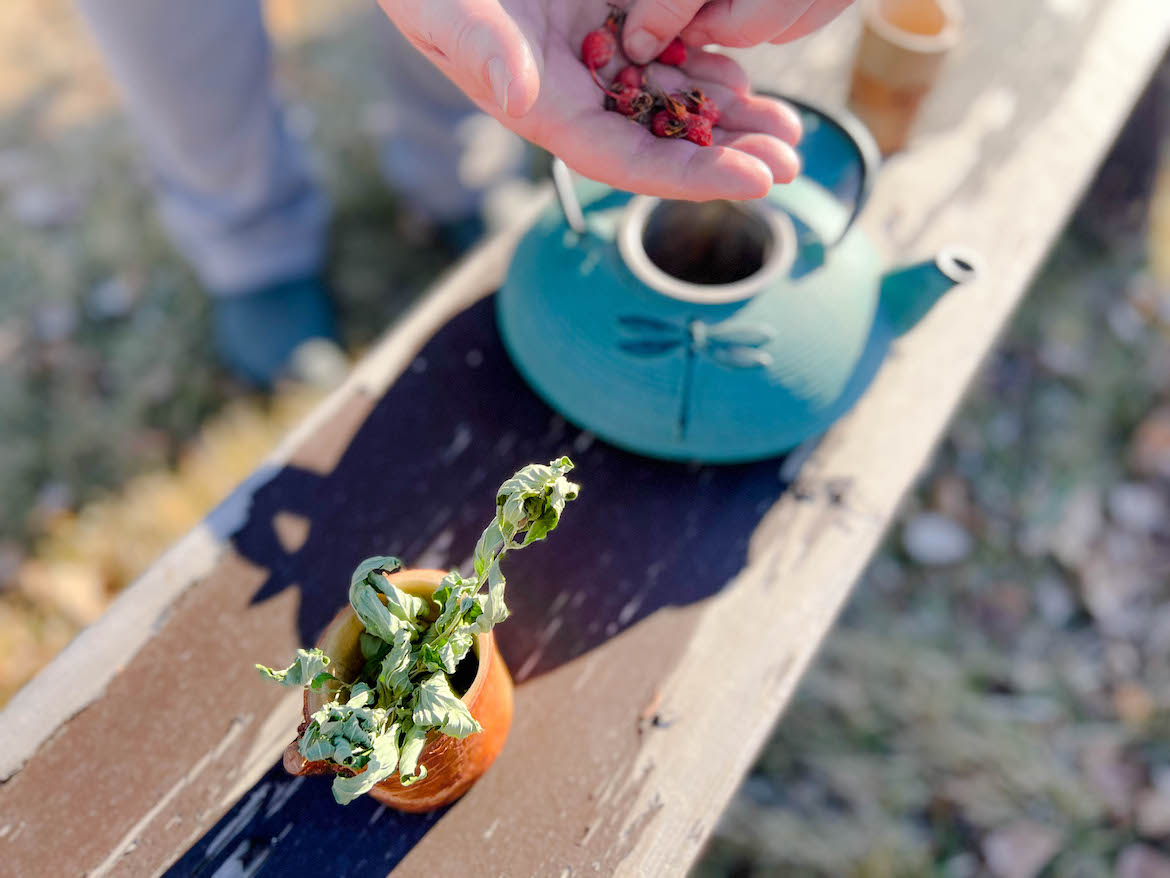
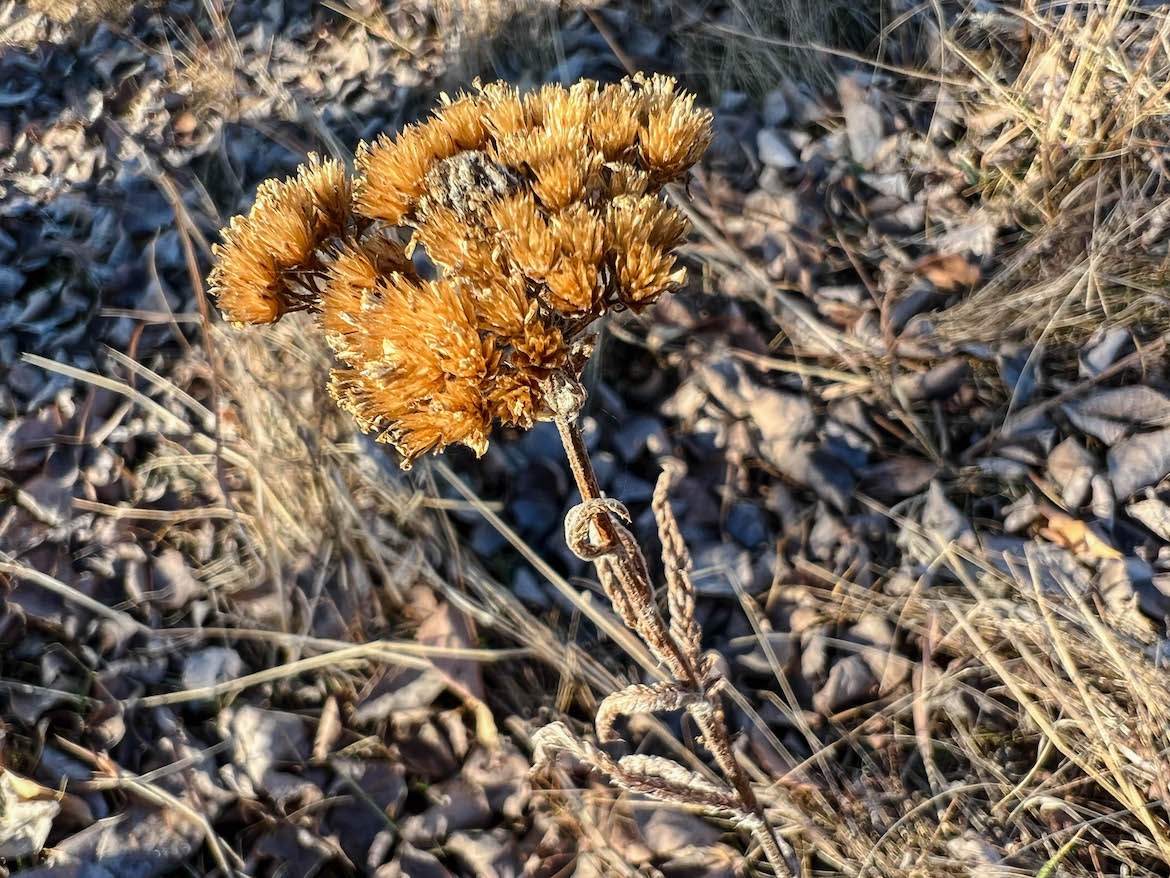
Mahikan Trails has led trips around the province like canyoning and pictograph tours in Grotto Canyon since 1995, along with workshops and courses. Holder is also the Board Chair of Indigenous Tourism Alberta, giving her a front row seat to see the positive impact that tourism has on education, reconciliation and complex issues like the differences between cultural appreciation versus cultural appropriation.
“Tourism is such a great resource, and one of the reasons why Indigenous tourism is on the rise is because we’re able to give some of those answers to people. So really, going out with an Indigenous operator is one amazing way to go do that.
“You’ve got operators that are open and willing to have anybody and everybody come and visit them and share [their] time,” she continues. “We’re there to not just share our culture, but to try and help people understand a little bit about who we are.”
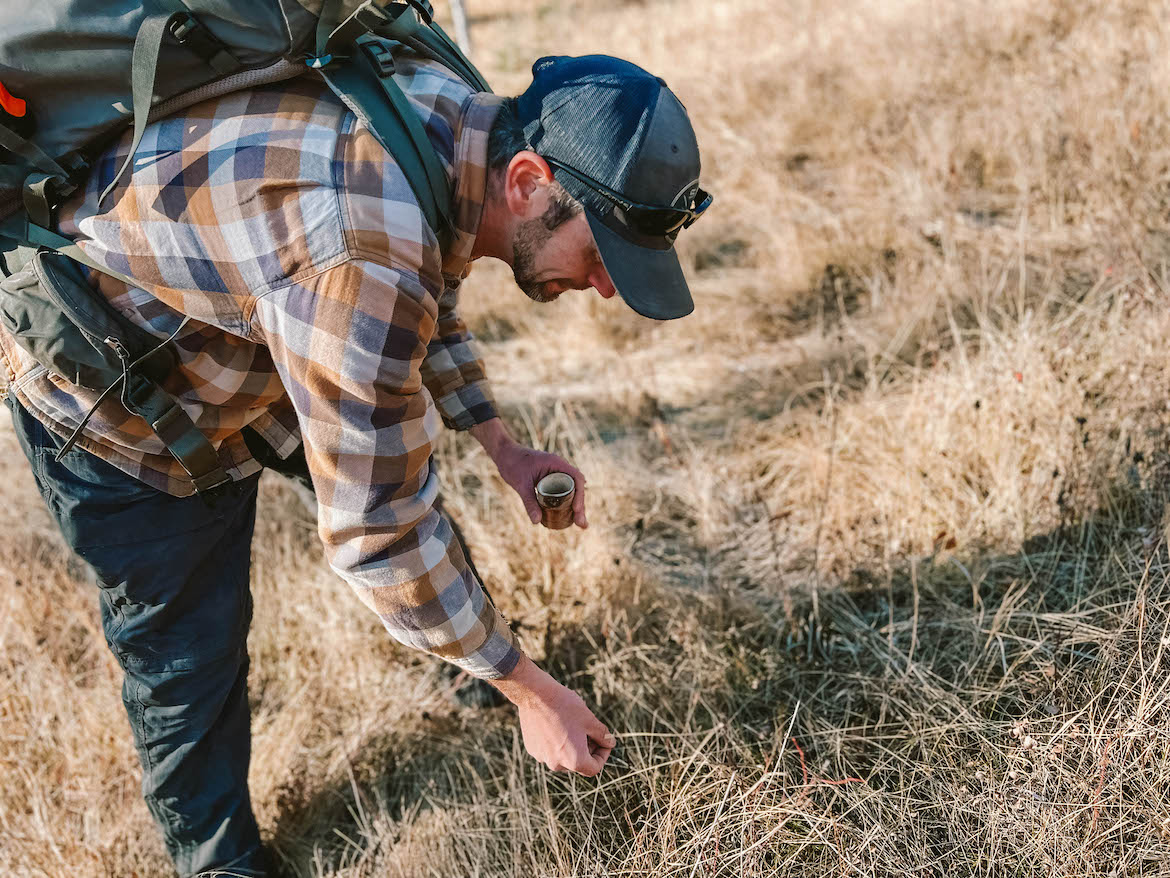
Other fun Aboriginal tours
Sometimes, Indigenous tourism is simply about getting outside, pushing your limits and having fun. The kind of fun you have while rappelling 30 metres down a frozen waterfall in the backcountry, then climbing all the way back up armed with heavy-duty cleats, ice picks and a rope under the watchful eye of Tim Taylor.
View this post on Instagram
Taylor owns Girth Hitch Guiding which runs via ferrata, ice climbing and rappelling tours in central Alberta’s stunningly scenic David Thompson Corridor that’s perhaps best known for natural wonders like towering Crescent Falls and the Abraham Lake ice bubbles. During day-long excursions, guests literally ‘learn the ropes’ of climbing, against a dramatic backdrop of sheer rock faces, deep canyons and magnificent waterfalls.
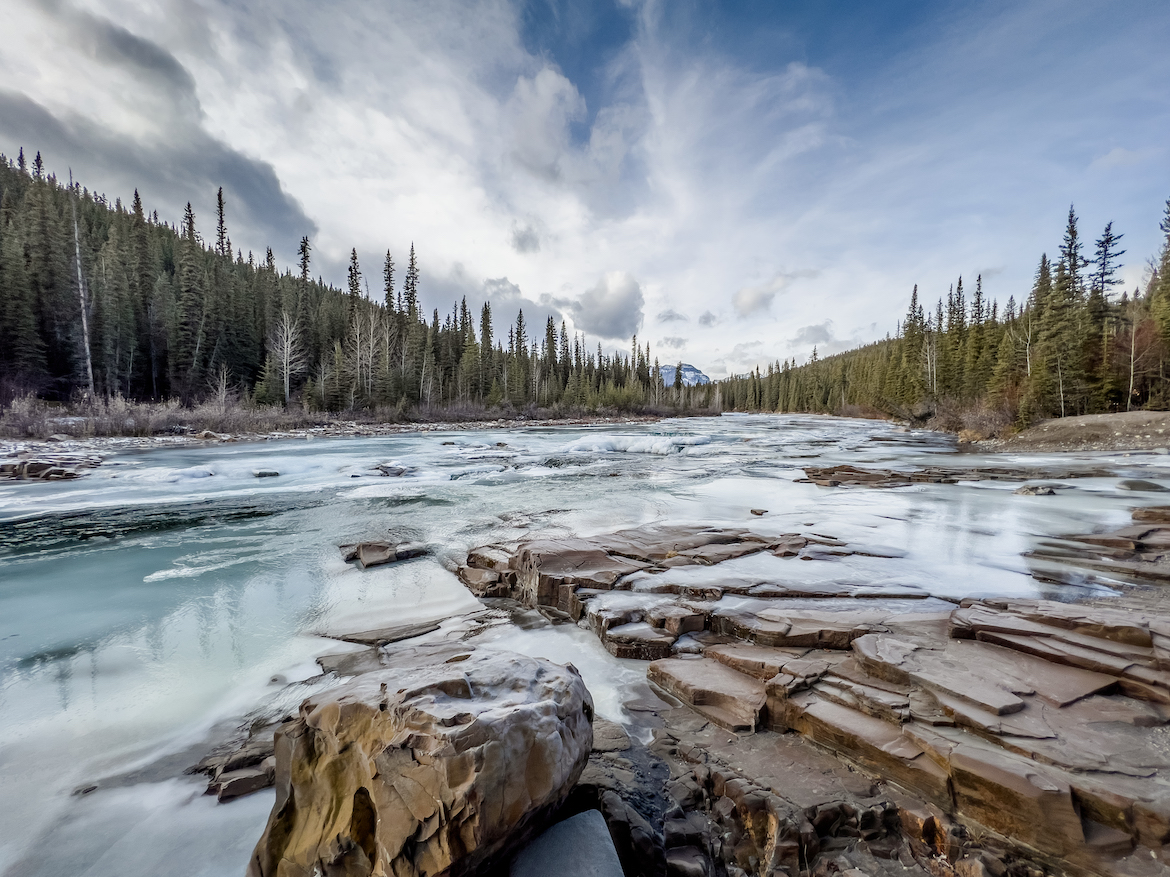
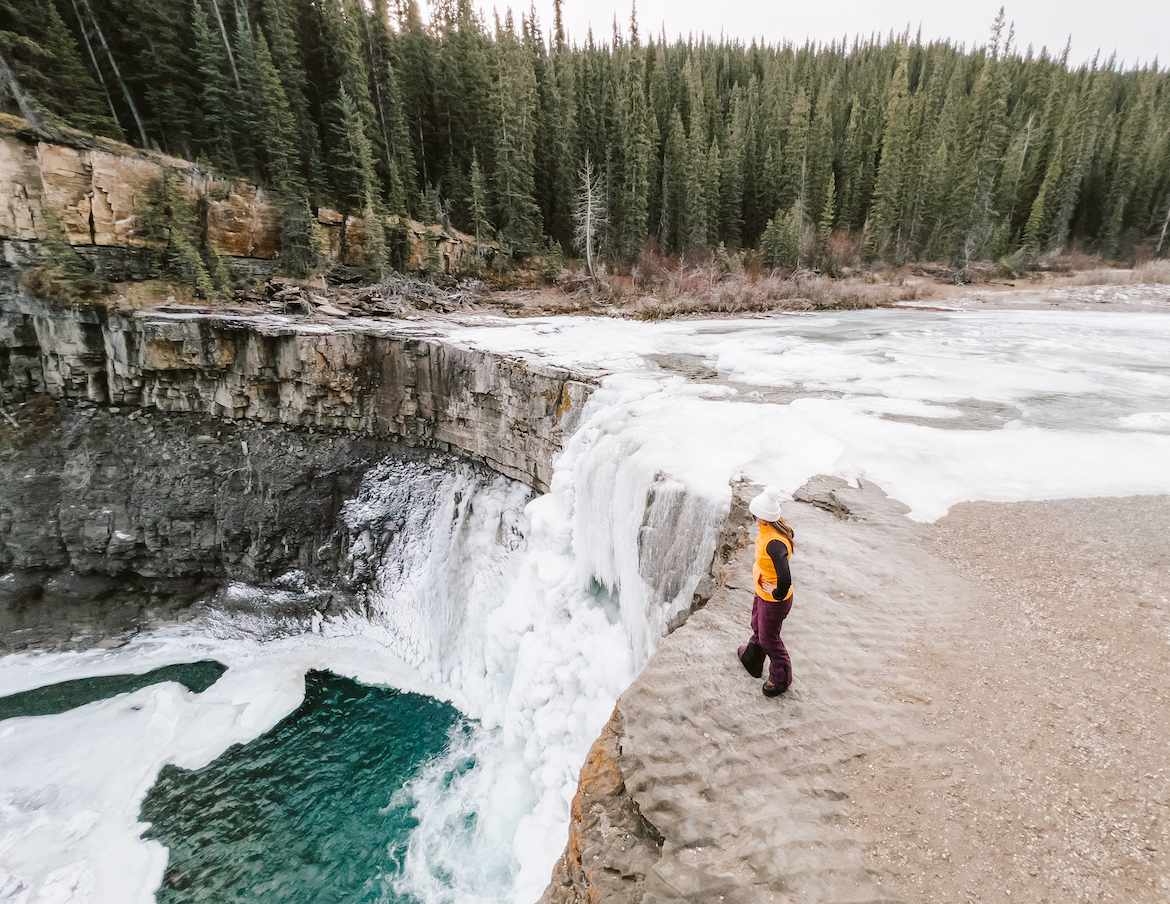
About a decade ago the friendly, 30-something father of four discovered he is Métis, setting into motion his ongoing efforts to learn more about and connect with his family history.
“I realized ‘this is really important,’ then you get older, you have kids, and you think ‘how do I actually connect to this?’” Taylor explains, as we clomp along a half-frozen river leading to the falls in thick winter gear. “So I’d say my journey is pretty young and ongoing as I connect to being a proud Métis person.”
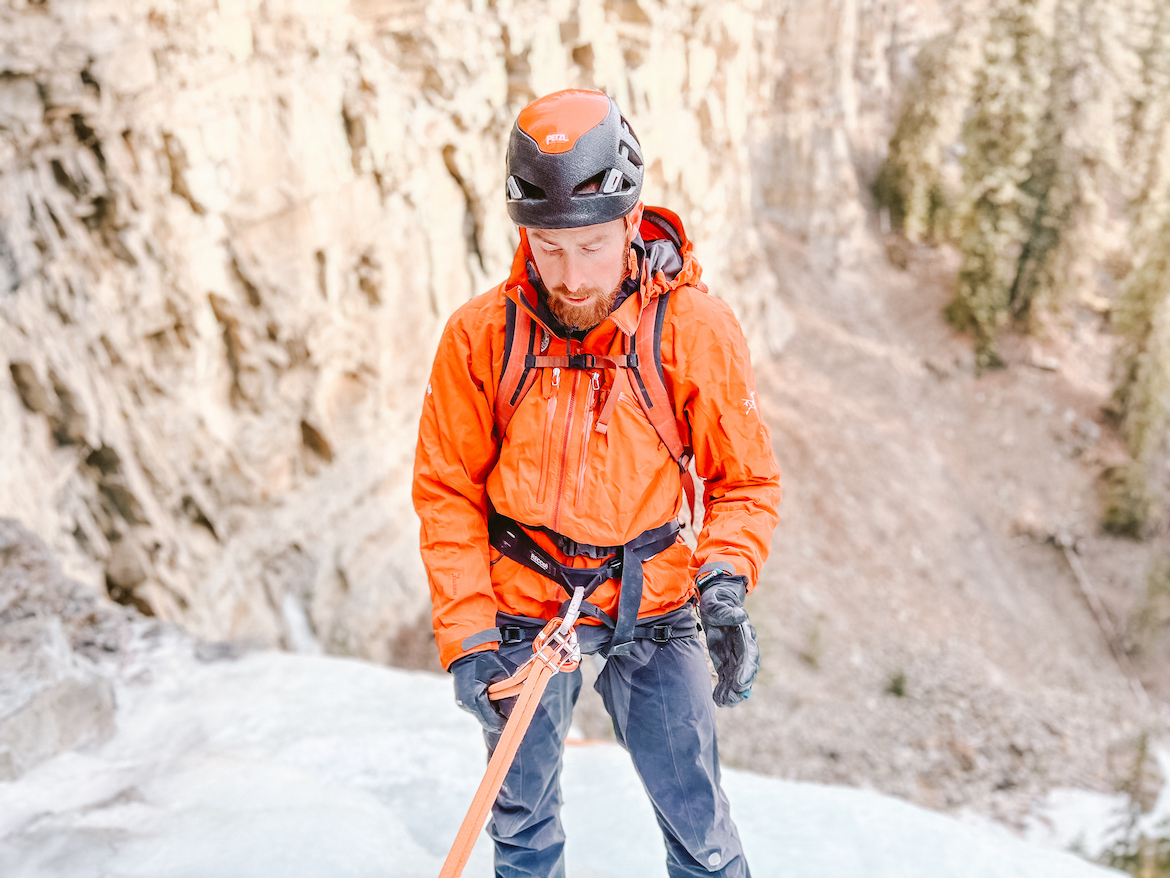
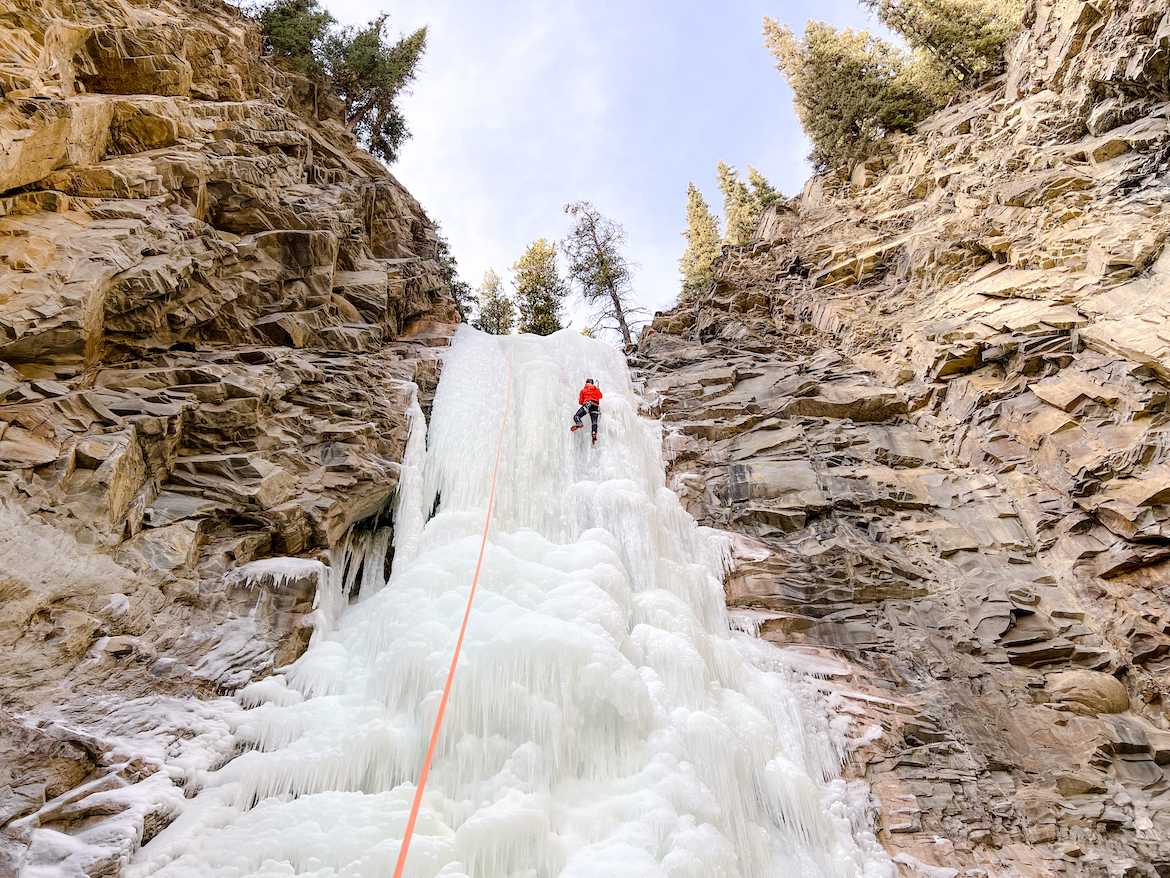
Taylor adds that the pristine region where he lives, works and plays is an important part of that road to self-discovery.
“These mountains in the Nordegg area are a place where I connect really deeply to the land, and to a sense of myself that’s different than I can anywhere else. I think one of the things that’s really important to Métis heritage is a sense of guiding and adventure, being in the wild.”
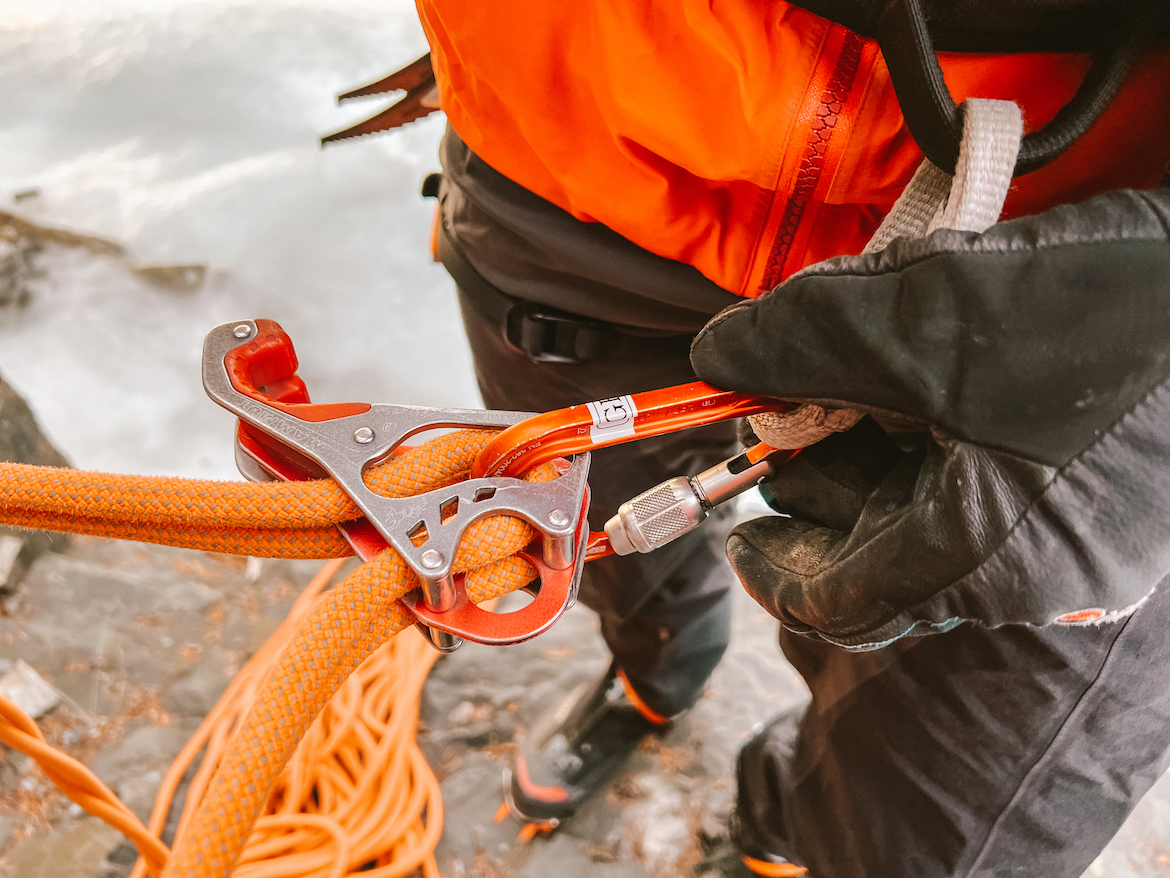
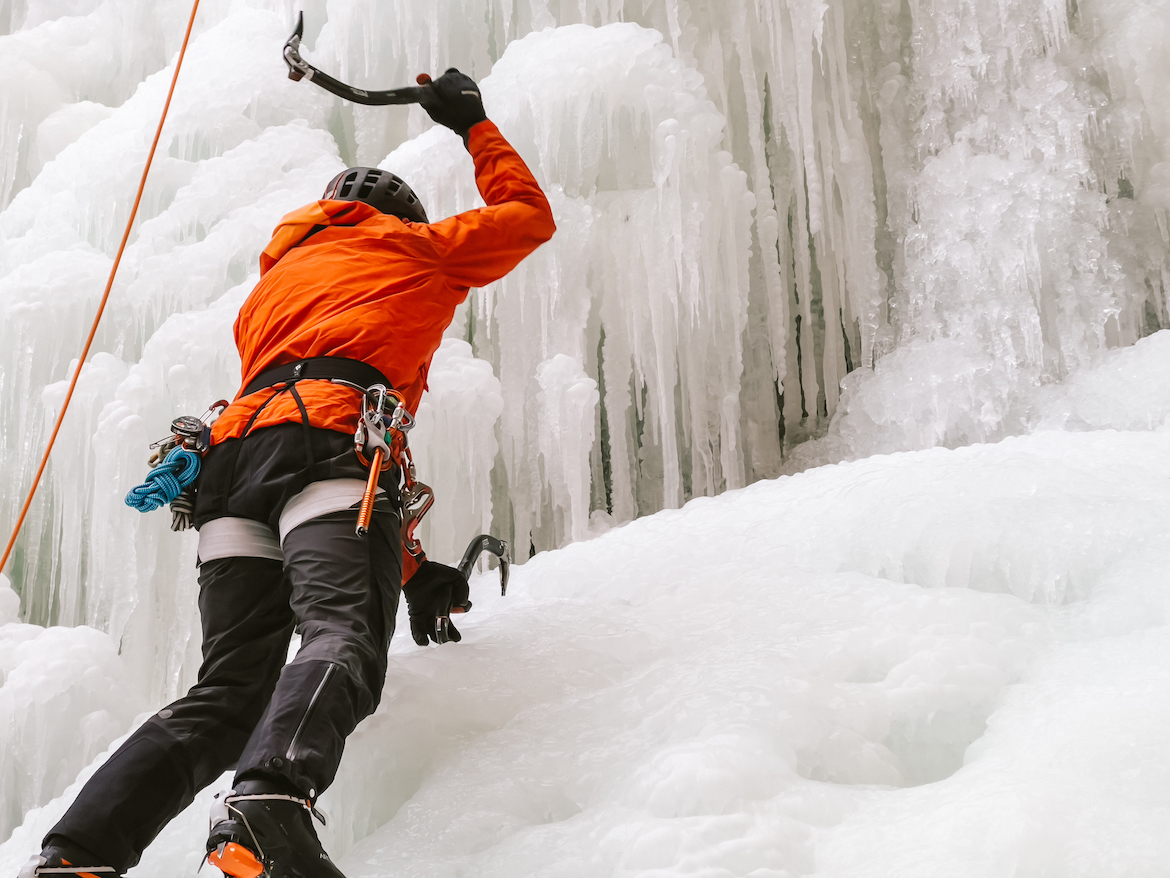
That sense of adventure, combined with Traditional Knowledge and stories about the past and present are the cornerstones of Indigenous tourism, making these incredible experiences a key step towards understanding and reconciliation.
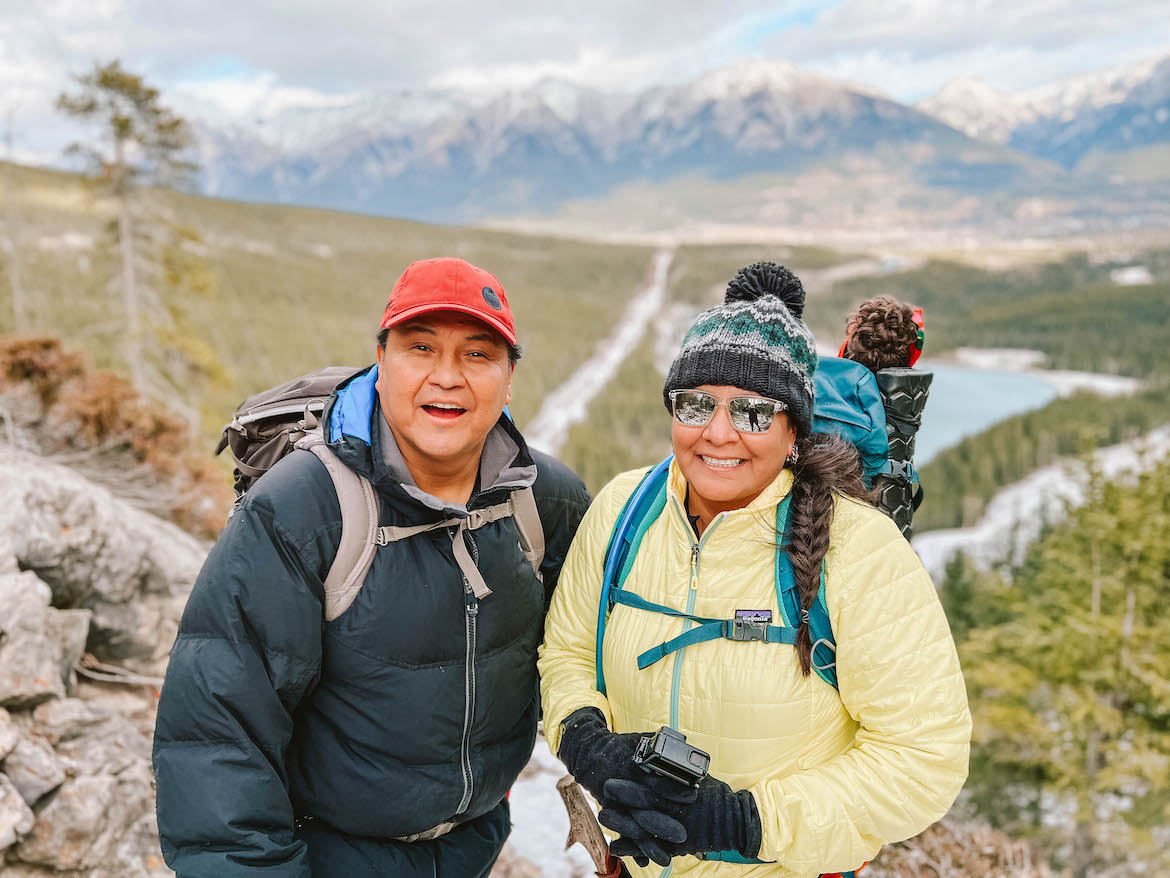
Globe Guide explored Alberta in collaboration with Indigenous Travel Alberta and Travel Alberta.
YOU MIGHT ALSO ENJOY:
- Spirit Ridge at Nk’Mip Resort: Luxury in the Osoyoos desert
- 10 best day trips from Calgary for fun outdoor adventures
- Southern Alberta road trip: Top stops and roadside attractions
SHARE THE PINSPIRATION! CLICK THE IMAGES BELOW TO PIN:
This post may contain affiliate links, which Globe Guide receives compensation for at no additional cost to you.

